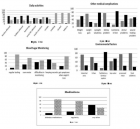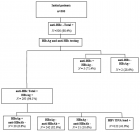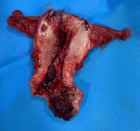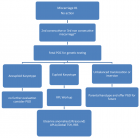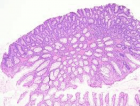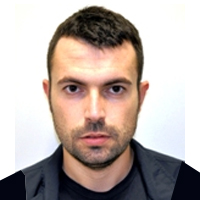Abstract
Review Article
Chronic fatigue syndrome and epigenetics: The case for hyperbaric oxygen therapy in biomarker identification
Rajit J Shah*
Published: 26 February, 2021 | Volume 5 - Issue 1 | Pages: 027-030
Chronic fatigue syndrome (CFS) is a poorly-understood respiratory condition that affects millions of individuals. Hyperbaric oxygen therapy (HBOT) is a treatment option being considered to address CFS as it is suggested to combat fatigue and increase oxygenation. HBOT provides two opportunities in advancing research of CFS: it may provide data on symptom amelioration and be utilized in the search for a biomarker. By either identifying biomarkers before using HBOT to compare epigenomes of patients before and after treatment or using HBOT to find epigenetic discrepancies between patients with and without treatment, matching epigenetic regulation with symptom amelioration may significantly advance the understanding of the etiology and treatment mechanism for CFS. EPAS1/HIF-2α is a leading candidate for an epigenetic biomarker as it responds differentially to hypoxic and normoxic conditions, which degrades more slowly in hypoxic conditions. Epigenetic regulation of EPAS1/HIF-2α in such differential conditions may be explored in HBOT experiments. In addition to HBOT as a promising treatment option for CFS symptoms, it may aid the identification of biomarkers in CFS. Further research into both outcomes is strongly encouraged.
Read Full Article HTML DOI: 10.29328/journal.jprr.1001020 Cite this Article Read Full Article PDF
Keywords:
Chronic fatigue syndrome; Hyperbaric oxygen therapy; EPAS1; HIF-2α; Hypoxia; Epigenetic regulation
References
- Broderick G, Fuite J, Kreitz A, Vernon SD, Klimas N, et al. A formal analysis of cytokine networks in chronic fatigue syndrome. Brain Behav Immun. 2010; 24: 1209-1217. PubMed: https://pubmed.ncbi.nlm.nih.gov/20447453/
- Landmark-Høyvik H, Reinertsen KV, Loge JH, Kristensen VN, Dumeaux V, et al. The genetics and epigenetics of fatigue. PMR. 2010; 2: 456-465. PubMed: https://pubmed.ncbi.nlm.nih.gov/20656628/
- Friedberg F, Jason LA. Understanding chronic fatigue syndrome: An empirical guide to assessment and treatment. American Psychological Association. 1998.
- Lombardi VC, Ruscetti FW, Gupta JD, Pfost MA, Hagen KS, et al. Detection of an infectious retrovirus, XMRV, in blood cells of patients with chronic fatigue syndrome. Science. 2009; 326: 585-589. PubMed: https://pubmed.ncbi.nlm.nih.gov/19815723/
- Jason LA, Porter N, Brown M, Anderson V, Brown A, et al. CFS: a review of epidemiology and natural history studies. Bull IACFS ME. 2009; 17: 88-106. PubMed: https://pubmed.ncbi.nlm.nih.gov/21243091/
- Mayo Clinic. Hyperbaric oxygen therapy. https://www.mayoclinic.org/tests-procedures/hyperbaric-oxygen-therapy/about/pac-20394380
- Sleiman SF, Henry J, Al-Haddad R, El Hayek L, Abou Haidar E, et al. Exercise promotes the expression of brain derived neurotrophic factor (BDNF) through the action of the ketone body β-hydroxybutyrate. Elife. 2016; 5: e15092. PubMed: https://pubmed.ncbi.nlm.nih.gov/27253067/
- Goldman B. Some headway on chronic fatigue syndrome: Brain abnormalities pinpointed. 2014. http://scopeblog.stanford.edu/2014/10/29/some-headway-on-chronic-fatigue-syndrome-brain-abnormalities-pinpointed/.
- Ding R, Jin Y, Liu X, Zhu Z, Zhang Y, et al. H3K9 acetylation change patterns in rats after exposure to traffic-related air pollution. Environ Toxicol Pharmacol. 2016; 42: 170-175. PubMed: https://pubmed.ncbi.nlm.nih.gov/26855416/
- John’s Hopkins Medicine. Hyperbaric Oxygen Therapy for Wound Healing. http://www.hopkinsmedicine.org/healthlibrary/test_procedures/neurological/hyperbaric_oxygen_therapy_for_wound_healing_135,44/
- Akarsu S, Tekin L, Ay H, Carli AB, Tok F, et al. The efficacy of hyperbaric oxygen therapy in the management of chronic fatigue syndrome. Undersea Hyperb Med. 2013; 40: 197-200. PubMed: https://pubmed.ncbi.nlm.nih.gov/23682549/
- Hoof EV, Coomans D, Becker PD, Meeusen R, Cluydts R, et al. Hyperbaric therapy in chronic fatigue syndrome. J Chronic Fatigue Syndr. 2003; 11: 37-49.
- EPAS1 Gene. https://ghr.nlm.nih.gov/gene/EPAS1#conditions
- Henderson J, Withford-Cave JM, Duffy DL, Cole SJ, Sawyer NA, et al. The EPAS1 gene influences the aerobic–anaerobic contribution in elite endurance athletes. Hum Genet. 2005; 118: 416-423. PubMed: https://pubmed.ncbi.nlm.nih.gov/16208515/
- Beall CM, Cavalleri GL, Deng L, Elston RC, Gao Y, et al. Natural selection on EPAS1 (HIF2α) associated with low hemoglobin concentration in Tibetan highlanders. Proc Natl Acad Sci U S A. 2010; 107: 11459-11464. PubMed: https://pubmed.ncbi.nlm.nih.gov/20534544/
- Graham AM, McCracken KG. Convergent evolution on the hypoxia-inducible factor (HIF) pathway genes EGLN1 and EPAS1 in high-altitude ducks. Heredity. 2019; 122: 819-832. PubMed: https://pubmed.ncbi.nlm.nih.gov/30631144/
- Wenger RH, Stiehl DP, Camenisch G. Integration of oxygen signaling at the consensus HRE. Sci STKE. 2005; 2005: re12. PubMed: https://pubmed.ncbi.nlm.nih.gov/16234508/
- Storti F, Santambrogio S, Crowther LM, Otto T, Abreu-Rodríguez I, et al. A novel distal upstream hypoxia response element regulating oxygen-dependent erythropoietin gene expression. Haematologica. 2014; 99: e45-48. PubMed: https://pubmed.ncbi.nlm.nih.gov/24510339/
- Lorenzo FR, Yang C, Fui MN, Vankayalapati H, Zhuang Z, et al. A novel EPAS1/HIF2A germline mutation in a congenital polycythemia with paraganglioma. J Mol Med. 2013; 91: 507-512. PubMed: https://pubmed.ncbi.nlm.nih.gov/23090011/
- Haase VH. Regulation of erythropoiesis by hypoxia-inducible factors. Blood Rev. 2013; 27: 41-53. https://pubmed.ncbi.nlm.nih.gov/23291219/
- Liu S, McConnell SC, Ryan TM. Erythropoiesis in the absence of adult hemoglobin. Mol Cell Biol. 2013; 33: 2241-2251. PubMed: https://pubmed.ncbi.nlm.nih.gov/23530053/
- Comino-Méndez I, de Cubas AA, Bernal C, Álvarez-Escolá C, Sanchez-Malo C, et al. Tumoral EPAS1 (HIF2A) mutations explain sporadic pheochromocytoma and paraganglioma in the absence of erythrocytosis. Hum Mol Genet. 2013; 22: 2169-2176. PubMed: https://pubmed.ncbi.nlm.nih.gov/23418310/
- Streeten DH, BellMD DS. Circulating blood volume in chronic fatigue syndrome. J Chronic Fatigue Syndrome. 1998; 4: 3-11.
Figures:
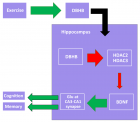
Figure 1
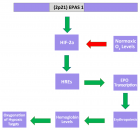
Figure 2
Similar Articles
-
Chronic fatigue syndrome and epigenetics: The case for hyperbaric oxygen therapy in biomarker identificationRajit J Shah*. Chronic fatigue syndrome and epigenetics: The case for hyperbaric oxygen therapy in biomarker identification. . 2021 doi: 10.29328/journal.jprr.1001020; 5: 027-030
-
A Case series on Asthma-COPD overlap (ACO) is independent from other chronic obstructive diseases (COPD and Asthma)Divya Khanduja*, Naveen Pandhi. A Case series on Asthma-COPD overlap (ACO) is independent from other chronic obstructive diseases (COPD and Asthma). . 2021 doi: 10.29328/journal.jprr.1001025; 5: 054-058
-
The effect of respira inhalation on the oxygen saturation of a patient’s blood (SpO2): A Case ReportHussien O Kadi*, Mohamed HK, Taha HK. The effect of respira inhalation on the oxygen saturation of a patient’s blood (SpO2): A Case Report. . 2023 doi: 10.29328/journal.jprr.1001042; 7: 001-003
Recently Viewed
-
Clinical and Histopathological Mismatch: A Case Report of Acral FibromyxomaMonica Mishra*,Kailas Mulsange,Gunvanti Rathod,Deepthi Konda. Clinical and Histopathological Mismatch: A Case Report of Acral Fibromyxoma. Arch Pathol Clin Res. 2025: doi: 10.29328/journal.apcr.1001045; 9: 005-007
-
Unconventional powder method is a useful technique to determine the latent fingerprint impressionsHarshita Niranjan,Shweta Rai,Kapil Raikwar,Chanchal Kamle,Rakesh Mia*. Unconventional powder method is a useful technique to determine the latent fingerprint impressions. J Forensic Sci Res. 2022: doi: 10.29328/journal.jfsr.1001035; 6: 045-048
-
Doppler Evaluation of Renal Vessels in Pediatric Patients with Relapse and Remission in Different Categories of Nephrotic SyndromeAmit Nandan Dhar Dwivedi*, Srishti Sharma, OP Mishra, Girish Singh. Doppler Evaluation of Renal Vessels in Pediatric Patients with Relapse and Remission in Different Categories of Nephrotic Syndrome. J Clini Nephrol. 2023: doi: 10.29328/journal.jcn.1001112; 7: 067-072
-
Atlantoaxial subluxation in the pediatric patient: Case series and literature reviewCatherine A Mazzola*,Catherine Christie,Isabel A Snee,Hamail Iqbal. Atlantoaxial subluxation in the pediatric patient: Case series and literature review. J Neurosci Neurol Disord. 2020: doi: 10.29328/journal.jnnd.1001037; 4: 069-074
-
Intelligent Design of Ecological Furniture in Risk Areas based on Artificial SimulationTorres del Salto Rommy Adelfa*, Bryan Alfonso Colorado Pástor*. Intelligent Design of Ecological Furniture in Risk Areas based on Artificial Simulation. Arch Surg Clin Res. 2024: doi: 10.29328/journal.ascr.1001083; 8: 062-068
Most Viewed
-
Evaluation of Biostimulants Based on Recovered Protein Hydrolysates from Animal By-products as Plant Growth EnhancersH Pérez-Aguilar*, M Lacruz-Asaro, F Arán-Ais. Evaluation of Biostimulants Based on Recovered Protein Hydrolysates from Animal By-products as Plant Growth Enhancers. J Plant Sci Phytopathol. 2023 doi: 10.29328/journal.jpsp.1001104; 7: 042-047
-
Sinonasal Myxoma Extending into the Orbit in a 4-Year Old: A Case PresentationJulian A Purrinos*, Ramzi Younis. Sinonasal Myxoma Extending into the Orbit in a 4-Year Old: A Case Presentation. Arch Case Rep. 2024 doi: 10.29328/journal.acr.1001099; 8: 075-077
-
Feasibility study of magnetic sensing for detecting single-neuron action potentialsDenis Tonini,Kai Wu,Renata Saha,Jian-Ping Wang*. Feasibility study of magnetic sensing for detecting single-neuron action potentials. Ann Biomed Sci Eng. 2022 doi: 10.29328/journal.abse.1001018; 6: 019-029
-
Pediatric Dysgerminoma: Unveiling a Rare Ovarian TumorFaten Limaiem*, Khalil Saffar, Ahmed Halouani. Pediatric Dysgerminoma: Unveiling a Rare Ovarian Tumor. Arch Case Rep. 2024 doi: 10.29328/journal.acr.1001087; 8: 010-013
-
Physical activity can change the physiological and psychological circumstances during COVID-19 pandemic: A narrative reviewKhashayar Maroufi*. Physical activity can change the physiological and psychological circumstances during COVID-19 pandemic: A narrative review. J Sports Med Ther. 2021 doi: 10.29328/journal.jsmt.1001051; 6: 001-007

HSPI: We're glad you're here. Please click "create a new Query" if you are a new visitor to our website and need further information from us.
If you are already a member of our network and need to keep track of any developments regarding a question you have already submitted, click "take me to my Query."






